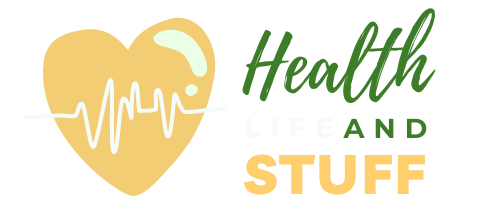Due to its numbing and sedative attributes, ketamine was first created in the 1950s and began to be used as a general anesthetic medically during the 1960s. But, recently, researchers have been looking into the possible advantages of ketamine for treating different mental health issues, including post-traumatic stress disorder (PTSD), depression, and anxiety.
While many drugs are available to treat anxiety, research indicates that over 50% of generalized anxiety disorder (GAD) patients resist treatment. That indicates that individuals don’t get better after taking the anti-anxiety medicine. Ketamine for anxiety St. Petersburg offers temporary relief from the mental and physical effects of anxiety and long-term restoration of brain function, especially when paired with psychotherapy.
How Ketamine Therapy Works

An estimated 70% of individuals who use ketamine under medical supervision to treat a mental health condition continue to benefit from it after the trip is done. A few individuals report feeling better starting a few days after taking it, even though they won’t experience the traditional high of ketamine.
One will most certainly experience dissociative symptoms while ketamine is present, but it is not the intended course of treatment. To receive treatment, one must go through that. Ketamine therapy measures how the brain reacts to ketamine and how the brain behaves after being exposed to ketamine.
The brain can react in various ways depending on the state it was in prior to the stimulus. Some individuals having anxiety for a long duration experience the loss of critical synaptic connections in their brains, which allow nerve cells to interact.
Because anxiety is so stressful, certain synaptic connections in the brain are pruned or lost, which reduces the number of synapses. According to different research, those severed connections begin to rebuild again within 24 hours of the first dose of medically administered ketamine. The antidepressant effects of ketamine are more effective on them as their synapses increase.
Other Effects on Brain
A substance (neurotransmitter) called glutamate is used by specific brain nerve cells (neurons) involved in the mood to communicate with one another. Glutamate receptors are required for the nerve cells to participate in this communication.
These nerve cells in the brains of certain depressed people no longer respond as favorably to glutamate. But after receiving ketamine, patients with this particular issue have new glutamate receptors added to their nerve cell connections. According to research, ketamine also has antidepressant benefits even though its primary mechanism of action is in glutamate receptors.
Several researchers believe that an opioid mechanism is how ketamine functions. The concern is that, like with opioid medicines, people may need increasingly higher doses of ketamine over time to experience its effects. Other researchers in studies of ketamine have raised this. Treatments administered gradually and tapered down should help lower this risk.
What To Expect During Ketamine Therapy Treatment?

Several types of ketamine are available in the market. Esketamine (Spravato nasal spray) is the sole treatment the FDA has licensed. It is intended for persons with serious anxiety illness, suicidal thoughts, or who have not found relief from depression with medication. They continue taking their antidepressants while receiving esketamine in a clinic or doctor’s office, where a medical professional keeps an eye on them for two hours following the dose.
Patients often receive the nasal spray twice weekly for 1 to 4 weeks, once weekly for 5 to 9 weeks, and once every two weeks or beyond.
The spray has warnings concerning sedation, difficulty focusing, making decisions, and thinking, and the possibility of drug abuse or misuse and suicidal thoughts and actions.
The FDA has not approved IV infusion, an arm shot, or lozenges as additional ketamine delivery methods for treating mental health issues. Most studies focus on IV ketamine administration. It is only administered at a doctor’s office by IV or injection. For home-usage purposes, some doctors will prescribe lozenges frequently to prevent depression between infusions.
Infusion Treatment for Ketamine Therapy

A common practice among physicians is to begin treatment with six infusions for three weeks. Two infusions each week, then one per week, and eventually, most patients only have one infusion every two to four weeks.
Most studies end the first phase of treatment after six weeks. Even though there is no evidence to support it, people frequently return for booster treatments if their symptoms reappear.
About 40 minutes pass during the IV infusion. After the drip stops, the dissociative experience begins abruptly and lasts 15 to 20 minutes before wearing off. Throughout the entire process, a doctor is constantly present. Though they may sometimes be in different rooms, the doctor is on call if the patient needs anything or starts feeling confused or uncomfortable.
The patient appears to be dozing off while on the drip. Most don’t speak or move. However, some people might remark or comment about the music they have in their headphones, another aspect of their experience, or even inquire about their whereabouts. Nobody bothers them unless they need something.
It’s a brave remark coming from a 51-year-old who has struggled with depression and anxiety since she was a little child. The person was also identified as having PTSD and persistent discomfort as an adult. Over the years, the individual has experimented with ten different antidepressants. But the heavy depression cloud remained immovable.
According to one of the patients, ketamine treatment helped to deal with the depression the person suffered for most of their life. The patient mentions having the impression of floating in color. With just one injection, ketamine’s antidepressant effects subside within a few hours, days, or weeks. The effects of the sequence of infusions endure longer.
Conclusion
For both instant relief and ongoing treatment, ketamine offers a distinctive alternative treatment. However, combined with therapy, ketamine is most beneficial for treating anxiety. Although ketamine reduces anxiety’s mental and physical symptoms, therapy can help address the underlying issues. The use of ketamine therapy may potentially be used with CBT, and other psychotherapy approaches. One should consult a doctor or therapist frequently to discuss the development and potential adverse effects.
